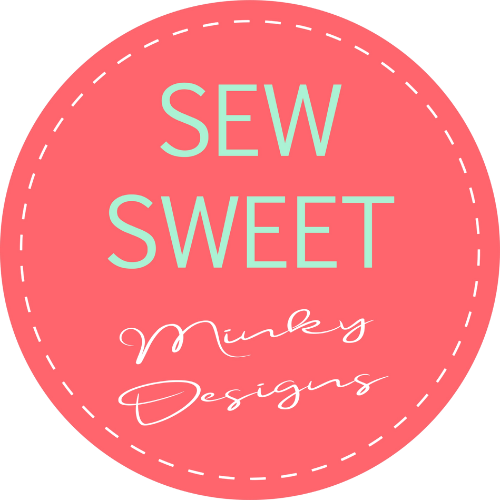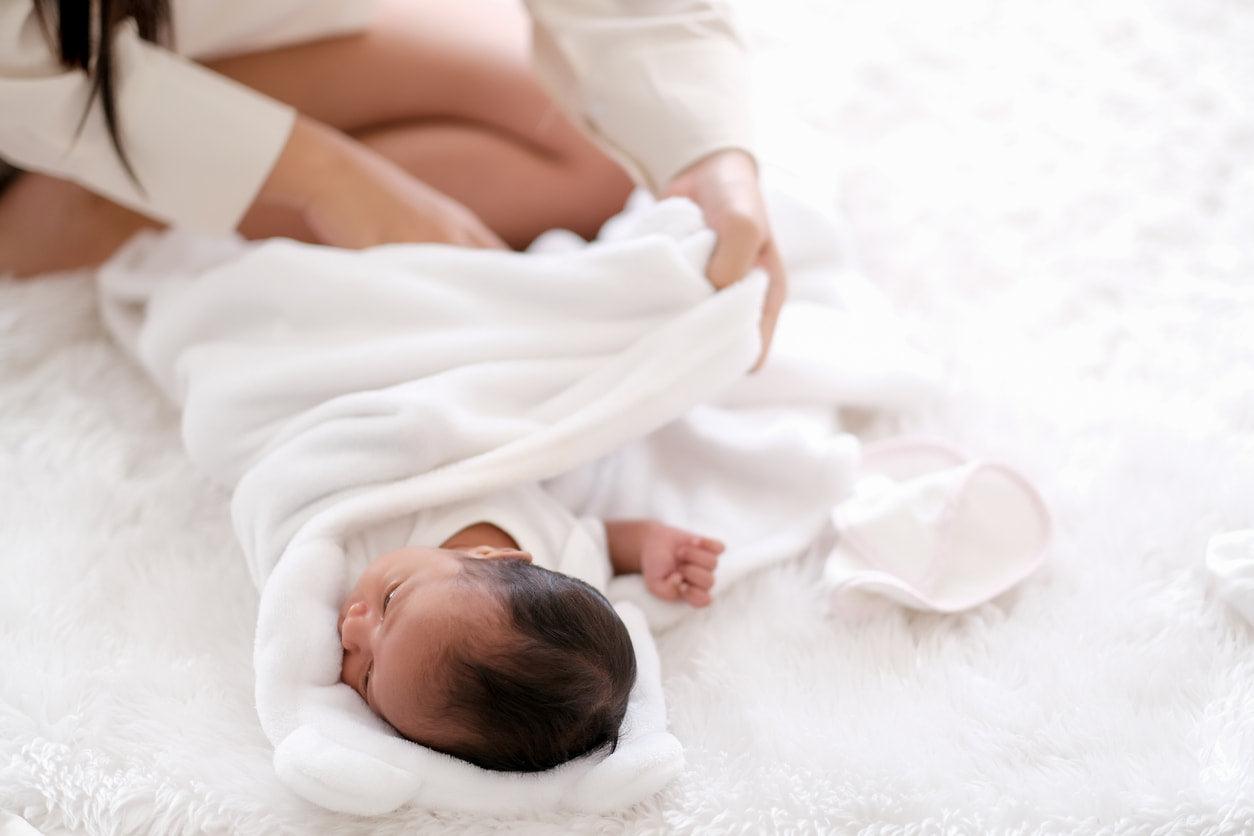New parents have a lot on their minds. You’re taking classes, reading books, and asking friends for advice. First and foremost, you want to keep your babies safe and healthy, including making sure they sleep comfortably.
Sleeping babies eat better, grow, and provide some quiet time for you to rest. Knowing what a swaddle blanket is and how it can help your baby sleep is vital for you and your baby’s health. It helps the whole household when babies get plenty of good, quality sleep.
How to Use Swaddle Blankets
First of all, what is swaddling? Most people have heard the term but are unsure about what it means specifically. It’s one of those traditions that gets handed down from generation to generation, but science backs it up. Doctors agree it is safe and effective.
When swaddling a baby, you wrap them in a comfortable blanket that can be easily folded and tucked. This replicates the warm, snug feeling they felt in the womb. This feeling comforts a baby and allows them to experience a more restful, safe, and calming sleep.
Swaddle blankets are smaller by design, sometimes with flaps on the side so new parents can easily snap or tuck them into place.
How to Swaddle a Baby
You can do this! Here’s how:
- Lie the swaddle blanket on a flat, sturdy surface.
- Fold it in half so that it resembles the shape of a triangle or diamond.
- Place your baby, face-up, on the blanket with their shoulders right under the top fold.
- Make sure the pointed bottom is at the baby’s feet.
- Gently take your little one’s left arm and place it over the chest.
- Take the left side of the swaddle blanket and pull it across your baby’s body.
- Tuck the edge underneath the baby.
- Take the bottom of the swaddle blanket and fold it over their feet.
- Tuck the edges into the top of the blanket.
- Repeat the same action with the baby’s right arm and the right side of the blanket.
What Swaddle Blankets Do for Infants
Now that you know what a swaddle blanket is and how to swaddle, let’s dive into the more finite details of swaddling and later on, blanket types.
Many newborn babies experience the Moro reflex. This automatic response happens when infants begin to adjust to life outside the womb. You might notice it as a twitch, or their arms might go up in the air quickly. It can alarm parents, but it is quite normal.
That twitch, or jerk, tends to interrupt a baby’s sleep. Using a swaddle blanket properly makes babies feel secure. This helps the reflex to occur less frequently and encourages a long, healthy, sleep.
If you live in a cooler space, you want your baby comfortable. At the same time, you know that loose bedding or blankets cause sleeping hazards. A swaddle blanket is a great fix because it keeps little ones warm without the risk.
Differences Between Swaddle Blankets, Receiving Blankets, and Sleep Sacks
What’s the difference between a swaddle blanket, receiving blanket, and sleep sack? As we’ve established, a swaddle blanket is a blanket that fits completely around your infant and allows you to wrap them into what can lovingly call a “baby burrito.”
A receiving blanket is a light weight blanket for newborn infants. They are usually square or rectangular in shape and measure 30 inches by 30 inches. Receiving blankets are soft, but thinner than swaddle blankets. They are made with minky, flannel, or cotton. You can typically find them in packages of three or more.
When debating between using a receiving blanket and a swaddle blanket, you might wonder if swaddling is possible with a receiving blanket. If the blanket can fit comfortably and snugly around the baby, you can use it to swaddle them.
Sleep sacks are made from cotton or wool materials and sometimes fleece. They also use zippers or snaps, so you can easily get them on and off.
Normally, you cannot swaddle a baby with a sleep sack. Sleep sacks are like pajamas without long sleeves for unrestricted arm movement and can be used until the toddler years. Most parents think of them as wearable blankets or a tiny sleeping bag that keeps out the chill and warm those little toes. With that said, sleep sacks don’t help hinder the Moro reflex discussed earlier on.
Age Ranges for Each Blanket
Be sure to check with your pediatrician, but generally speaking, swaddling newborns is a safe and effective way of helping them sleep soundly. Our guidelines for age-appropriate use of sleep sacks, receiving blankets, and swaddle blankets can be adjusted based on your baby’s unique situation.
Age ranges for each blanket:
- Sleep Sacks: Newborn to toddler age.
- Receiving Blankets: Newborn to the first birthday.
- Swaddle Blankets: Newborn until they start to roll over, usually around four months.
Which Kind of Swaddling Blanket to Buy?
Every baby and parent is different. Some prefer traditional, larger, thin swaddle blankets made with soft material that easily stretches around the baby. Others prefer two-in-one swaddles that keep them snug and allow their arms more freedom.
5 Qualities of a Good Swaddle Blanket
When you’re shopping for a comfortable and reliable swaddle blanket, you want to consider the following five qualities.
- Thin/Thickness: Place it up to your face. Does it feel substantial rather than flimsy?
- Quality Swaddle Blanket Material: Go with minky, cotton, or flannel for softness, and they tend to last longer, too.
- Warmth: A good swaddle blanket keeps the baby warm.
- Softness: Nothing abrasive or scratchy will do.
- Hypoallergenic: This will ensure your baby doesn’t break out in a rash from the material.
Safe Sleeping Tips
Now that you have the swaddle blanket you need, let’s review some safety checks for your baby’s best sleep. In general, make sure you:
- Use a firm mattress in the crib or bassinet.
- Place your baby on their back for the first year, whether you’re putting them down for a nap during the day or at bedtime in the evening.
- Consider sharing the same room with your baby for at least six months, a year if possible. Then you can sleep when they sleep.
- Don’t share your bed with an infant or put them to sleep on a sofa or chair. This is unsafe.
- Swaddle your baby neither too loosely nor too tightly. You want it to be just right.
- Stop swaddling once your baby begins rolling over (around four months). Restricted arm movement can become dangerous.
- Keep all objects, such as dolls or toys, out of the crib.
- Do not place pillows, quilts, or loose blankets in the crib either.
Bottom Line
Enjoy this special time with your little one. It goes by too fast! When it comes to providing comfort and peaceful sleep for your newborn baby, swaddling with a soft, well-made blanket does the trick.
Now that you understand what a swaddle blanket is, browse Sew Sweet Minky Designs and our hand-stitched infant blankets today!

Share:
How to Wash Blankets: Everything You Need to Know
How to Repair a Blanket: An Updated Guide